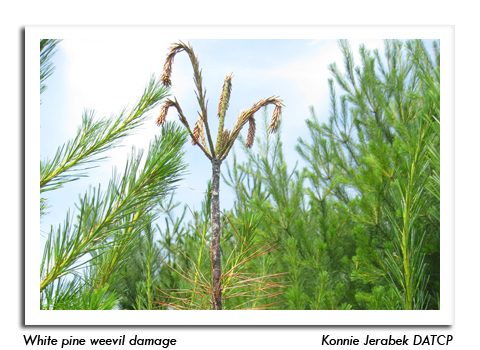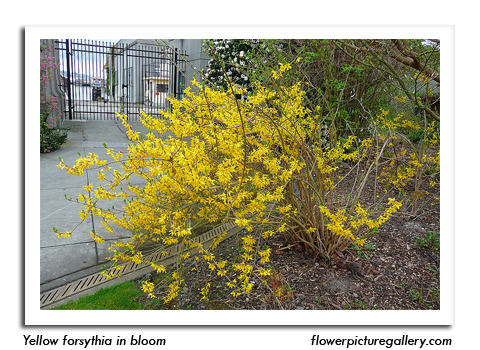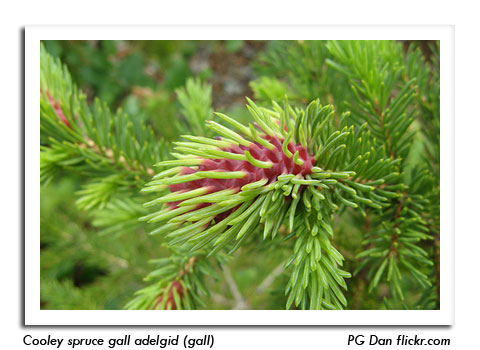
 |
|
|
Nursery & Forest
Volume 59 Number 2 Date 05/08/2014 WHITE PINE WEEVIL - The vibrant yellow blooms of the forsythia shrub are a phenological indicator of white pine weevil emergence and can be used to time scouting and control measures. Soon after the distinctive yellow flowers appear in spring, the adult white pine weevil resumes feeding and laying eggs on the terminal shoots of pines and spruce. The presence of weevils and oviposition holes suggests egg hatch is imminent and treatments should be initiated promptly. Since insecticides are most effective prior to egg hatch (before larvae tunnel into the shoots), growers are urged to closely inspect their trees in the next two weeks for signs of activity. In areas where the treatment interval has passed, removal of wilted leaders should be planned for June or July. Adult white pine weevils are one of the earliest pests to resume activity each spring, requiring just 7-58 degree days (base 50°F) before emerging from overwintering sites. BIRCH LEAFMINER - Expanding birch leaves should be closely examined in the near future for the translucent blotch mines indicative of leafminer attack. Timely chemical control is critical to suppressing damage. Birch trees with recurrent problems should be treated early in spring, before any leaf discolorations appear. After the mines are apparent, damage may be reduced by treating young larvae during their initial feeding stages. COOLEY SPRUCE GALL ADELGID - Overwintered immature females are active and should be noticeable on the undersides of Colorado blue spruce branches near the base of new swelling buds. The females develop rapidly in early spring, producing eggs that soon hatch into nymphs. Their feeding stimulates new shoots to elongate into the characteristic pinecone-shaped galls that encompass the entire shoot. Control must occur before the females develop their white waxy coverings. The preferred treatment window is in early spring before new growth starts. The next treatment opportunity will be in fall, after the last generation of nymphs has settled onto the foliage of Douglas fir or into bark crevices of Colorado blue spruce. NR40 INVASIVE SPECIES RULE - Many aquatic and terrestrial plants commonly used in the nursery industry will be listed as prohibited or restricted once proposed revisions to the DNR's Chapter NR 40 Invasive Species Rule take effect next fall. A few well-known species are the woodland and aquatic forget-me-not, Myosotis scorpiodes and M. sylvatica, and wisteria, Wisteria floribunda and W. sinensis. The addition of 42 new prohibited plant species and 29 new restricted plants has been proposed. The revisions provide a phase-out period of 3-5 years for plants listed as restricted, though plants on the prohibited list will not have a phase-out option. It is important for nursery operators and brokers to become familiar with the invasive plants regulated by Chapter NR40. Refer to the following website for a list of regulated, non-regulated and proposed species: http://dnr.wi.gov/topic/Invasives/speciesNR40.asp?filterBy=Category&filterVal=Plants&addFilter=Classification -- Konnie Jerabek, DATCP Nursery Inspector 



|
|
|